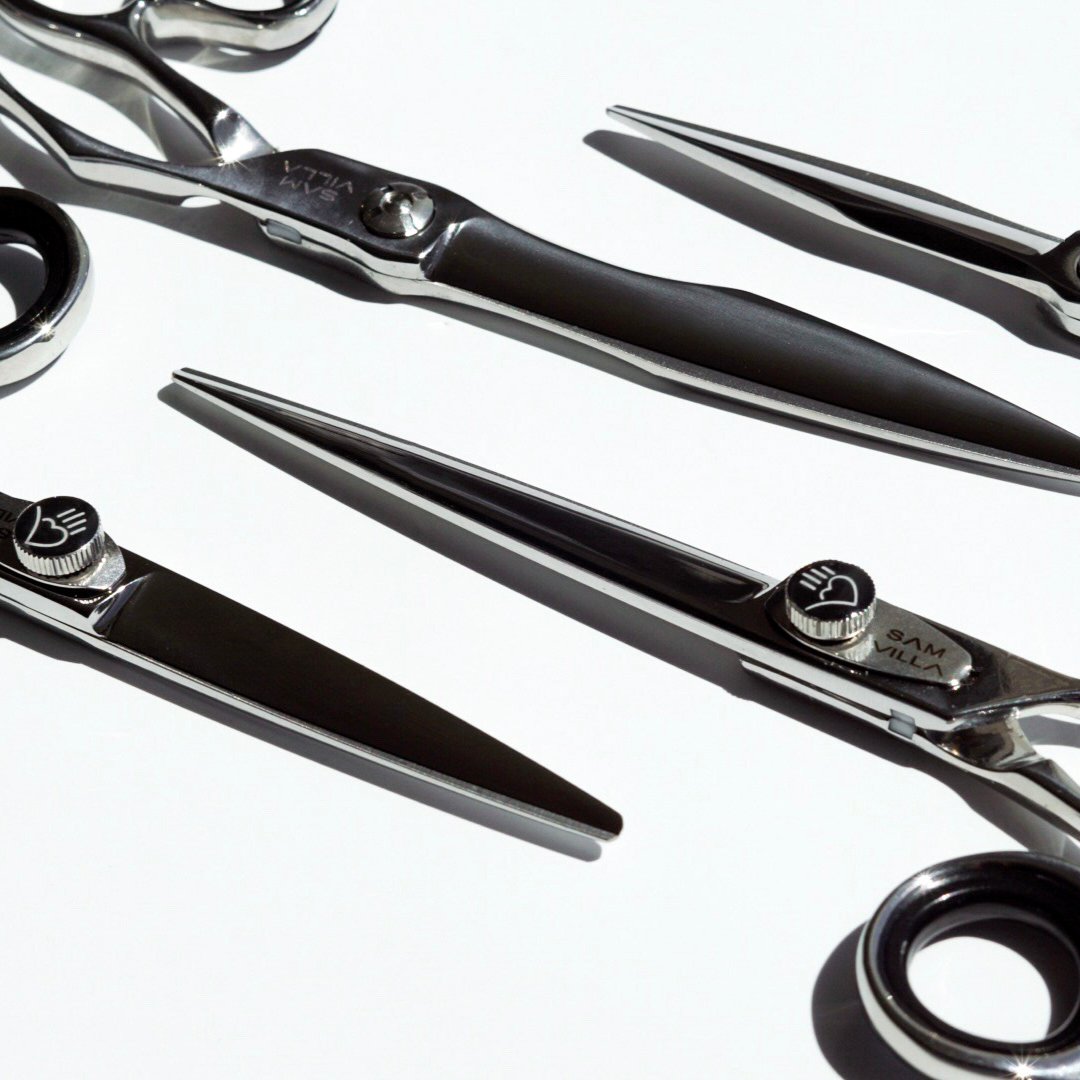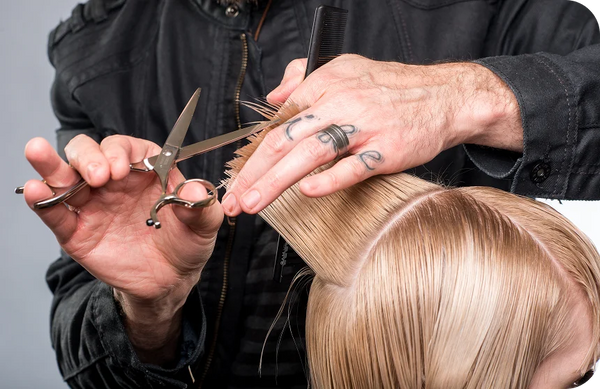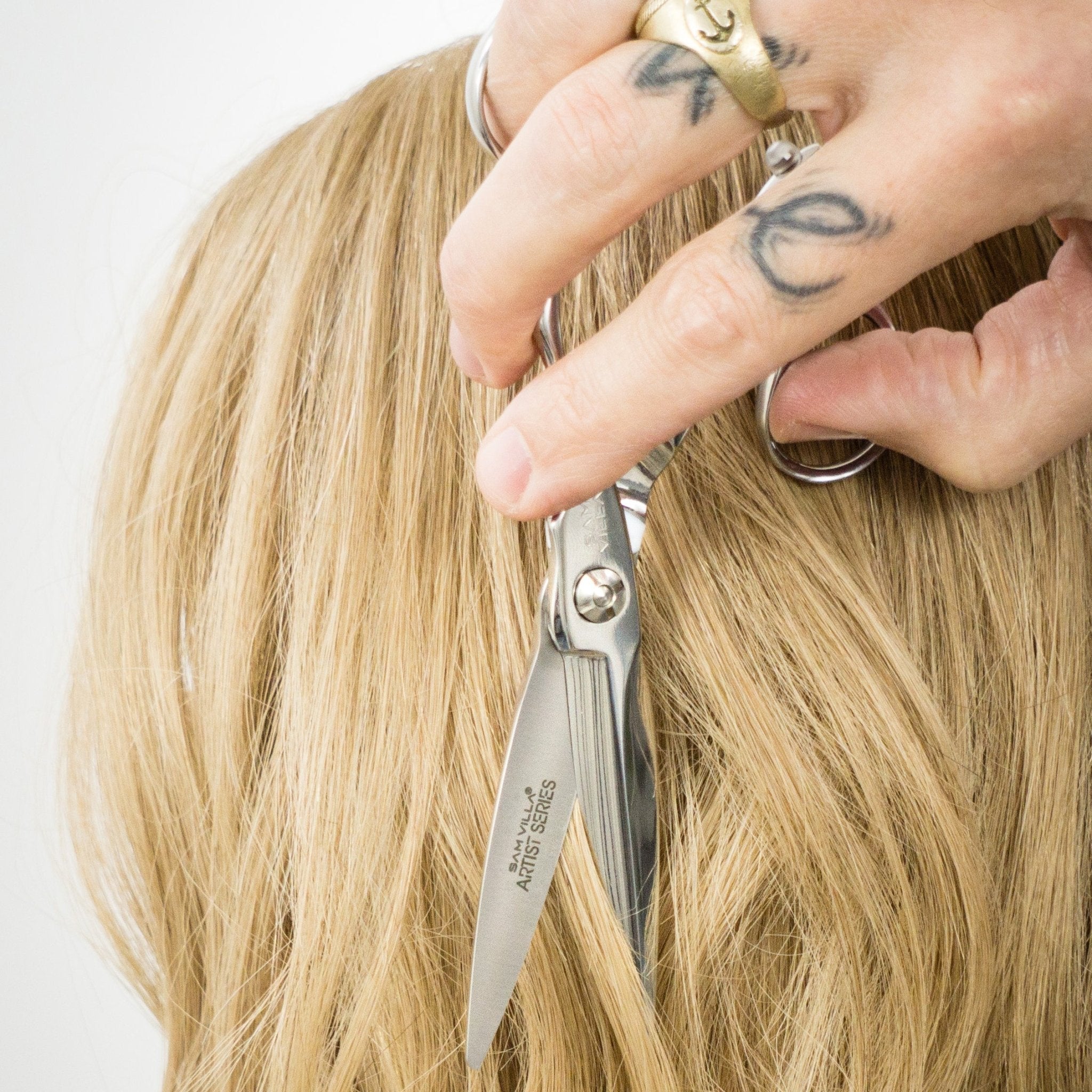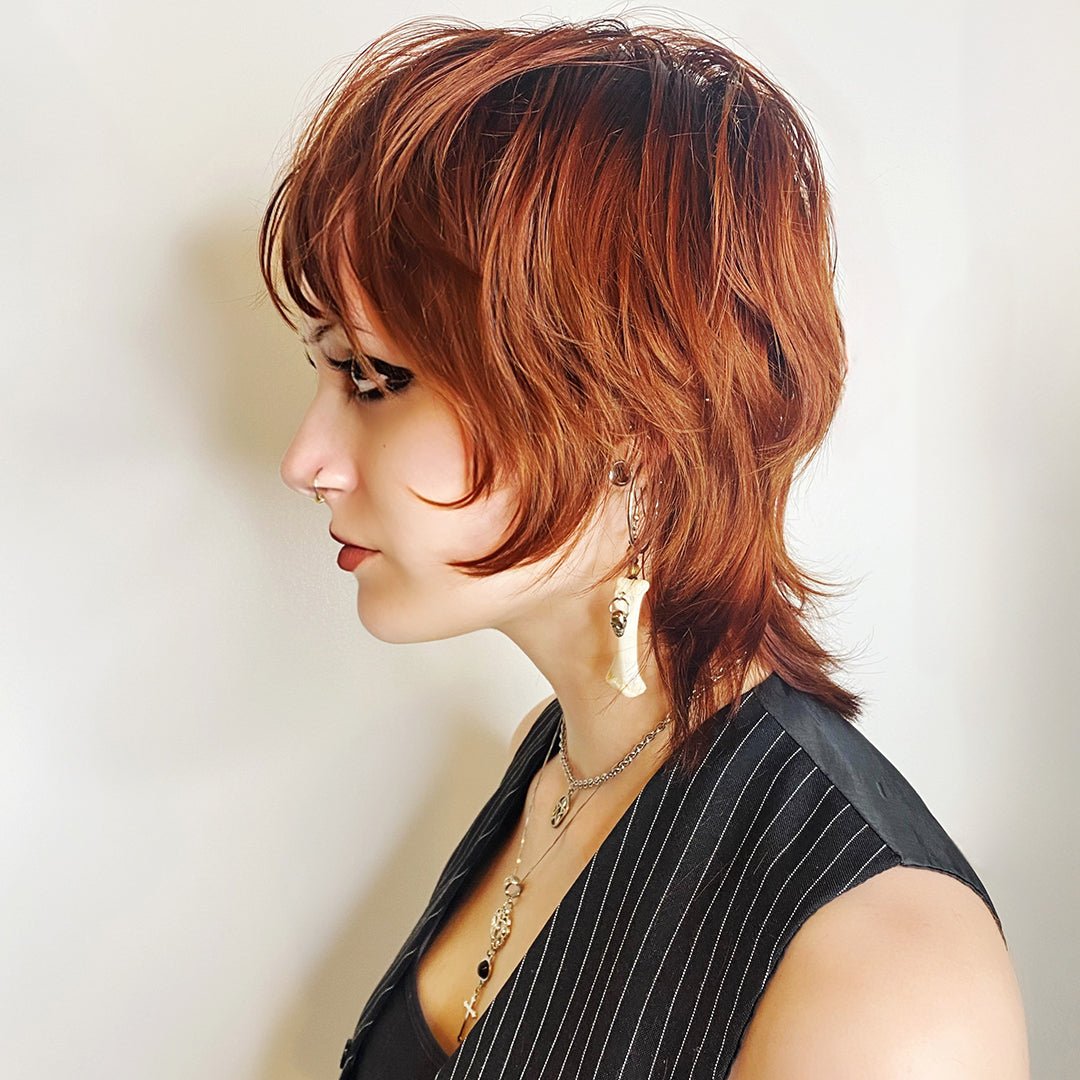When evaluating professional haircutting shears, ergonomic design is an important factor to consider. The study of ergonomics refers specifically to efficiency and safety in the design of a tool or useable object. A subject Sam Villa has consulted with doctors on to create ergonomically correct shears that are designed to reduce and eliminate pain.
For a stylist choosing a haircutting shear, this means how comfortable it will be to use over time and how it may help avoid a repetitive stress injury. This article will examine features found in many of today’s ergonomic professional haircutting shears and why these are beneficial. Arguably, the most important features to consider when selecting a shear for daily use are the handle and ring configurations. The distance between the thumb and finger rings, as well as the “angle” of the handle, makes a huge impact on how the user must position their shoulder, arm, and wrist.
Arguably, the most important features to consider when selecting a shear for daily use are the handle and ring configurations. The distance between the thumb and finger rings, as well as the “angle” of the handle, makes a huge impact on how the user must position their shoulder, arm, and wrist.
Opposing Grip Shears

Traditionally, barbering scissors were designed with a symmetrical handle and opposing rings. This places the finger rings directly across from each other and is the least ergonomic configuration.
The user of an opposing grip shear will be inclined to raise their elbow to a horizontal position for many techniques, which causes unnecessary strain on the shoulder. This handle was originally designed to be held with the thumb and ring finger. The only real benefit of this design is leverage. With the thumb being furthest away from the pivot, leverage is maximized but at the cost of ergonomics.
The one shear that really benefits from an opposing symmetrical grip is a professional blending or thinning shear. With a blending shear, stylists need the ability to use decide whether the teeth of the shear are pointing up or point down so an opposing grip allows a blending or thinning scissor to be “reversible”
Offest Grip Shears
Offset ring configurations shorten the thumb handle, which lessens the distance the thumb must move to open and close the shear.
For example: When compared to a shear with a symmetrical handle and opposing rings, a professional haircutting shear with a symmetrical handle and offset ring configuration will cause the thumb to move less – thereby reducing the risk of repetitive stress injury. However, regardless of the degree of offset, a shear with symmetrical handles can still cause the user to raise their elbow.
Crane Handle
Shears with a “Crane” handle feature an offset thumb ring with a ring handle aligned straight in-line with the blade. The straight ring handle allows the elbow and hand to move at a lower position - reducing strain on the shoulder.
Forward Set Thumb

Recent innovations in shear design have produced professional haircutting shears with a “Forward Set” thumb configuration, also known as Extended Crane. In this crane configuration, the thumb handle is much shorter, placing the thumb in a neutral position across from the index finger. This mimics the hand at rest, which minimizes strain on the tendons in the hand and arm.
To help you choose the right pair of shears that take the pain out of cutting hair, look no further. Sam Villa Shears are designed to improve symptoms of strains and repetitive movements with an ergonomic forward set thumb position that forces the elbow down while cutting, to eliminate neck and should pain.
The thumb ring may also be designed to make the shear more ergonomic. Some professional haircutting shears feature a “cutaway” in the thumb ring. This is an indentation, or groove, created at the back of the ring, which allows the user to lower their elbow and place their thumb horizontally into the cutaway and move the blade.
Other professional haircutting shears feature an “Anatomic” thumb ring which is tilted slightly – allowing the user to lower their elbow in certain techniques.
Swivel Shears
The Rotating Thumb Handle, or Swivel Thumb, places the thumb ring on a pivot, giving the user freedom to position their thumb comfortably while maintaining a grip on the shear. With practice, professional haircutting shears with swivel thumbs will allow the user to keep their elbow low for the entire haircut, providing the maximum ergonomic benefit.
Often overlooked when considering shear ergonomics is proper sizing of the shear rings to the user’s fingers. Most manufacturers of professional haircutting shears include interchangeable “scissor rings”, or Spacers, to help the user get their perfect fit.
Proper Hand Position

To maximize the thumb’s lever-like movement, the shear should be positioned as close to the tip of the thumb as possible. The closer the shear gets to the palm of the hand, the more movement is required to open and close it.
For most users, proper fit will set the finger ring at the second digit (middle bone) of the user’s ring finger, but not past the joint toward the knuckle. The thumb should have enough grip to move the blade but should not be fully inserted into the thumb ring.
Today’s professional ergonomic haircutting shears utilize combinations of these features, often fusing crane handles, swivel thumb rings, and cutaways in a single shear.
When choosing a professional haircutting shear, one must carefully assess their cutting style, workload, and ergonomic habits at the chair. Some shears may require the user to “relearn” certain techniques and adapting the muscles in the hands to a new cutting position can even create a bit of initial soreness (like changing up a workout routine), but the ergonomic benefits of such efforts will provide rewards over time – allowing for a more satisfying, and less painful, career.
For more reading on ergonomics and shears, we suggest these 3 posts next.





